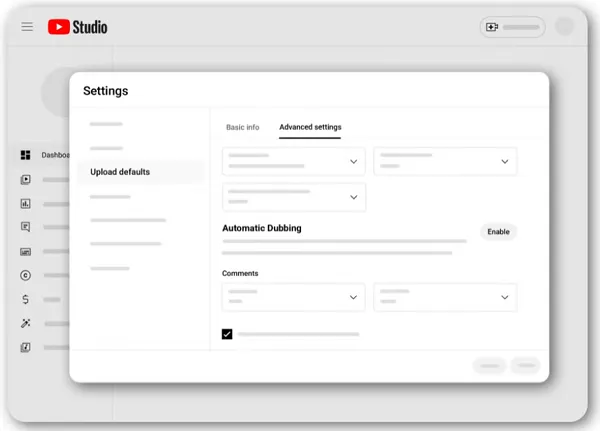Practical approaches to successful AI integration
The Fast Company Impact Council is an invitation-only membership community of leaders, experts, executives, and entrepreneurs who share their insights with our audience. Members pay annual dues for access to peer learning, thought leadership opportunities, events and more. There’s no question that artificial intelligence has taken the world by storm. However, as the initial excitement over the technology fades, we find ourselves in a new phase of thoughtful exploration. There are many innovative AI startups that have captured the world’s attention; however, many organizations still struggle to develop a clear roadmap to take full advantage of this transformative technology. So, what’s the hold up? And how can business leaders avoid fleeting trends, effectively align their teams, and successfully integrate AI to achieve measurable impact and ROI for their business? Embrace the journey AI is already transforming industries, boosting efficiency and automating tasks ranging from data entry and language translation to document processing. And the benefits are clear—recent Accenture research found that the vast majority of organizations are seeing stronger-than-expected returns from their generative AI investments. Still, it’s important to keep a balanced perspective. While many AI solutions promise substantial benefits, the real challenge is identifying those that add tangible value. With new technologies emerging almost weekly, some leaders may also hesitate to invest because they are unsure if a better option is just around the corner. AI’s true power comes from practical, enterprise-ready applications. For business leaders wondering where to start, the key is identifying the right challenges to tackle and knowing when and how to implement solutions effectively. Here are seven actionable tips to help you navigate this exciting landscape and build an AI decision-making framework tailored to your organization’s needs. 1. Identify the use case First, pinpoint your specific needs and business objectives. Start within your organization, identifying pain points AI can address. Think about what AI does well, like spotting patterns, crunching numbers, and making predictions. Could it help with document translation, content creation, or customer insights? With so many potential applications, determining where to start might seem daunting. A focused, purposeful approach ensures you’re investing in AI solutions that deliver real results. 2. Consider specialized models Over the last two years, we’ve seen much of the excitement around general purpose AI models outpace their value. As you evaluate AI tools for your organization, consider specialized AI models offering tailored solutions for specific industry needs. General AI models can do many things pretty well, but for higher stakes and more specific demands, specialized models often address complex, industry-specific challenges more effectively. For example, healthcare AI models can help doctors identify diseases more accurately, while banks use credit-scoring AI to determine who’s likely to pay back loans. Language AI tools like DeepL are also specialized to businesses communicating across languages and markets. Specialized AI offerings are trained on domain-specific data optimized for particular tasks or industries, delivering enhanced quality and accuracy with lower risk of errors. They’re also often designed with built-in compliance features aligned with industry regulations. This makes them more cost-effective, with clearer ROI. 3. Are humans the answer? When you’re holding a hammer, everything looks like a nail, right? As the founder of an AI company, you might be surprised to hear me say this, but just because AI is the big thing right now doesn’t mean it’s the singular solution for every problem or opportunity. So before diving into the deep end, consider if a human solution might actually be more effective than AI. Weighing what people, supported by AI, do best versus what AI can offer on its own, will help ensure you take the right approach for your organization’s needs. 4. Start with pilot projects If you’re about to deploy an AI solution for the first time, begin with pilot projects to test your AI integrations in smaller, controlled environments. Starting small with a more limited investment reduces overall risk and can allow you to gather real-world data, monitor performance, and assess alignment with business goals before scaling. Pilot projects can also help build confidence within your teams and among leadership, making way for more successful full-scale AI deployments. 5. Invest in tech (and training) To truly harness AI’s potential, focus on bringing in new talent and continuously training existing employees. Depending on the implementation’s complexity, you might need new positions like data scientists, machine learning engineers or specialists. Upskilling your existing w

The Fast Company Impact Council is an invitation-only membership community of leaders, experts, executives, and entrepreneurs who share their insights with our audience. Members pay annual dues for access to peer learning, thought leadership opportunities, events and more.
There’s no question that artificial intelligence has taken the world by storm. However, as the initial excitement over the technology fades, we find ourselves in a new phase of thoughtful exploration. There are many innovative AI startups that have captured the world’s attention; however, many organizations still struggle to develop a clear roadmap to take full advantage of this transformative technology.
So, what’s the hold up? And how can business leaders avoid fleeting trends, effectively align their teams, and successfully integrate AI to achieve measurable impact and ROI for their business?
Embrace the journey
AI is already transforming industries, boosting efficiency and automating tasks ranging from data entry and language translation to document processing. And the benefits are clear—recent Accenture research found that the vast majority of organizations are seeing stronger-than-expected returns from their generative AI investments.
Still, it’s important to keep a balanced perspective. While many AI solutions promise substantial benefits, the real challenge is identifying those that add tangible value. With new technologies emerging almost weekly, some leaders may also hesitate to invest because they are unsure if a better option is just around the corner.
AI’s true power comes from practical, enterprise-ready applications. For business leaders wondering where to start, the key is identifying the right challenges to tackle and knowing when and how to implement solutions effectively. Here are seven actionable tips to help you navigate this exciting landscape and build an AI decision-making framework tailored to your organization’s needs.
1. Identify the use case
First, pinpoint your specific needs and business objectives. Start within your organization, identifying pain points AI can address. Think about what AI does well, like spotting patterns, crunching numbers, and making predictions. Could it help with document translation, content creation, or customer insights? With so many potential applications, determining where to start might seem daunting. A focused, purposeful approach ensures you’re investing in AI solutions that deliver real results.
2. Consider specialized models
Over the last two years, we’ve seen much of the excitement around general purpose AI models outpace their value. As you evaluate AI tools for your organization, consider specialized AI models offering tailored solutions for specific industry needs.
General AI models can do many things pretty well, but for higher stakes and more specific demands, specialized models often address complex, industry-specific challenges more effectively. For example, healthcare AI models can help doctors identify diseases more accurately, while banks use credit-scoring AI to determine who’s likely to pay back loans. Language AI tools like DeepL are also specialized to businesses communicating across languages and markets.
Specialized AI offerings are trained on domain-specific data optimized for particular tasks or industries, delivering enhanced quality and accuracy with lower risk of errors. They’re also often designed with built-in compliance features aligned with industry regulations. This makes them more cost-effective, with clearer ROI.
3. Are humans the answer?
When you’re holding a hammer, everything looks like a nail, right? As the founder of an AI company, you might be surprised to hear me say this, but just because AI is the big thing right now doesn’t mean it’s the singular solution for every problem or opportunity. So before diving into the deep end, consider if a human solution might actually be more effective than AI. Weighing what people, supported by AI, do best versus what AI can offer on its own, will help ensure you take the right approach for your organization’s needs.
4. Start with pilot projects
If you’re about to deploy an AI solution for the first time, begin with pilot projects to test your AI integrations in smaller, controlled environments. Starting small with a more limited investment reduces overall risk and can allow you to gather real-world data, monitor performance, and assess alignment with business goals before scaling. Pilot projects can also help build confidence within your teams and among leadership, making way for more successful full-scale AI deployments.
5. Invest in tech (and training)
To truly harness AI’s potential, focus on bringing in new talent and continuously training existing employees. Depending on the implementation’s complexity, you might need new positions like data scientists, machine learning engineers or specialists. Upskilling your existing workforce can be equally essential to ensure employees can adapt and thrive alongside technological advancements.
6. Have a solid data strategy in place
AI requires large volumes of data to perform its best, so it’s essential to have a solid data strategy infrastructure in place. Your plan should address how your organization will collect, securely store and access data; ensure compliance with evolving data privacy regulations, copyright standards and ethical guidelines; and assign responsibility for ongoing data governance and management. Answering these questions up front will save your company stress and problems later.
7. Refresh your ROI framework and adjust it regularly
Most business leaders can recall digital initiatives that didn’t meet expectations, which can lead to concerns that their AI investments might follow a similar path. To enhance your ROI, outline your initiative’s measurable goals, such as efficiency, cost savings, or an enhanced customer experience. Establish baseline metrics to understand current performance; then track improvements directly linked to AI.
It’s important to be adaptable, regularly revisiting goals and metrics to reflect evolving business priorities, market conditions, and technological changes. Unlike standard digital projects, AI initiatives can uncover new opportunities or shift mid-course. Also consider AI’s long-term strategic advantages, which may take time to come to fruition.
From hyperbole to high performance
To make AI work, organizations should shift their focus from what’s trending to enterprise-ready solutions that deliver lasting and specific value. Define your use cases up front, adopt an agile ROI framework, a robust data strategy, and commit to continuous improvement. This will unlock AI’s transformative potential and build a foundation for long-term competitive advantage.
Jarek Kutylowski is CEO and founder of DeepL.
































































































































































































![How to Find Low-Competition Keywords with Semrush [Super Easy]](https://static.semrush.com/blog/uploads/media/73/62/7362f16fb9e460b6d58ccc09b4a048b6/how-to-find-low-competition-keywords-sm.png)
